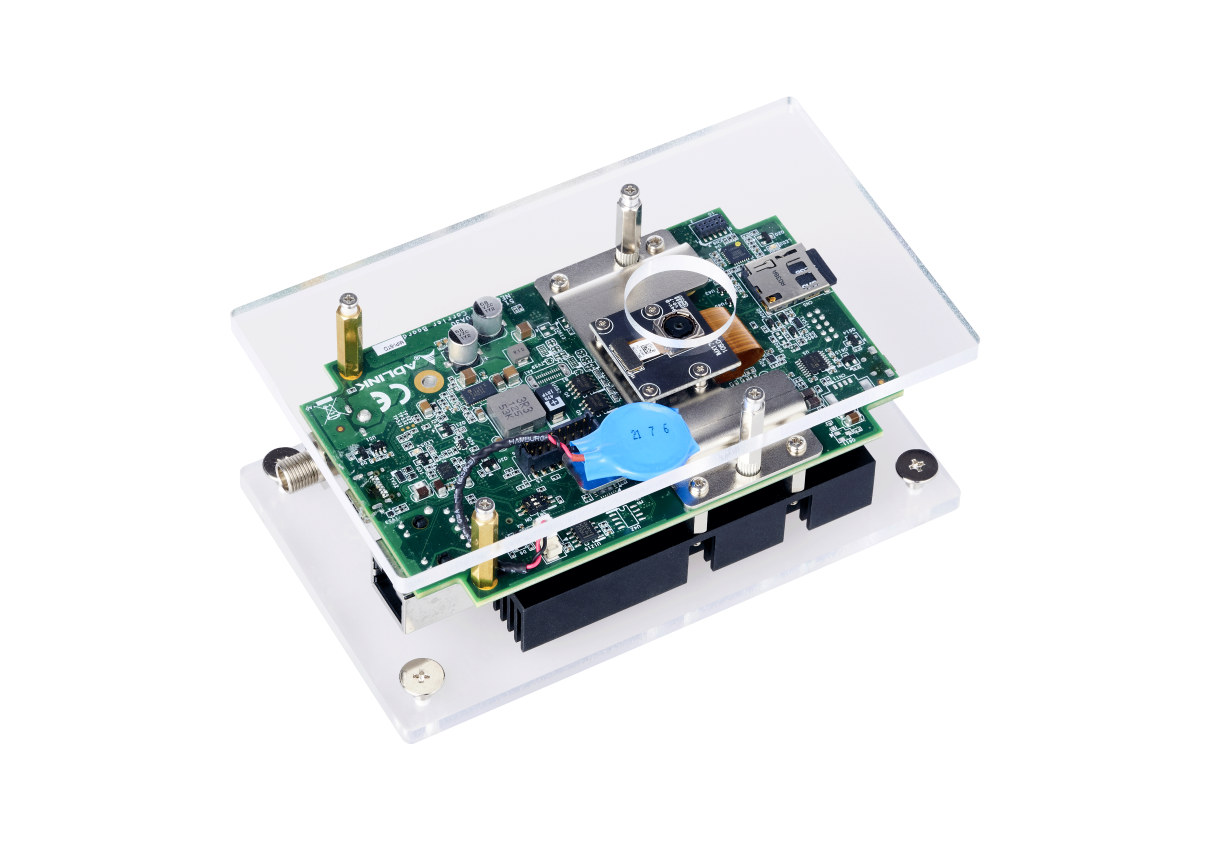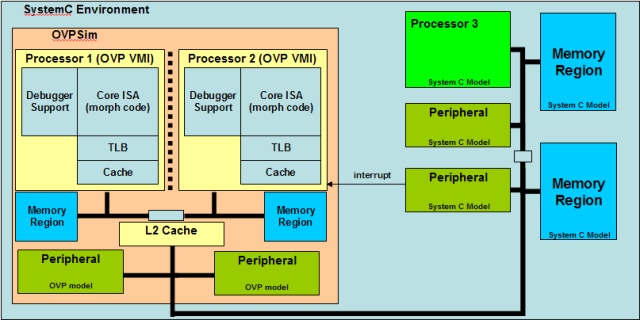Particle’s Monitor One Developer Edition is a customizable cellular IoT gateway for monitoring industrial equipment packaged in an IP67 rugged enclosure with reference firmware, and suitable for rapid prototyping with support for a range of I/Os and sensors, and even a prototyping area for to solder your own circuitry. Like the company’s earlier Tracker One asset tracker, the Monitor One is based on the Tracker SoM with a Nordic Semi nRF52840 Arm Cortex-M4 wireless SoC for Bluetooth connectivity, a Quectel LTE Cat M1 (North America) or Cat 1 with 3G and 2G fallback (EMEA), u-blox Neo-M8U GNSS module, and an ESP32 for WiFi location support. The new customizable cellular IoT gateway still integrates with the Particle IoT PaaS (Platform as a Service), and the company also provides developer tools. The Monitor One Developer Edition is comprised of the following items: Monitor One base model fitted with a Particle Tracker SoM […]
NVIDIA Jetson Nano based AI camera devkit enables rapid computer vision prototyping
ADLINK “AI Camera Dev Kit” is a pocket-sized NVIDIA Jetson Nano devkit with an 8MP image sensor, industrial digital inputs & outputs, and designed for rapid AI vision prototyping. The kit also features a Gigabit Ethernet port, a USB-C port for power, data, and video output up to 1080p30, a microSD card with Linux (Ubuntu 18.04), and a micro USB port to flash the firmware. As we’ll see further below it also comes with drivers and software to quickly get started with AI-accelerated computer vision applications. AI Camera Dev Kit specifications: System-on-Module – NVIDIA Jetson Nano with CPU – Quad-core Arm Cortex-A57 processor GPU – NVIDIA Maxwell architecture with 128 NVIDIA cores System Memory – 4 GB 64-bit LPDDR4 Storage – 16 GB eMMC Storage – MicroSD card socket ADLINK NEON-series camera module Sony IMX179 color sensor with rolling shutter Resolution – 8MP (3280 x 2464) Frame Rate (fps) – […]
RAKwireless introduces WisBlock modular power supply, IP65 enclosures, and more sensor modules
RAKwireless Wisblock modular IoT prototyping system will get new modules about once every quarter and the latest Wisblock Summer 2022 event brings some RAK190xx base boards and power modules to support various power sources from solar panels to PoE, two IP65-rated “Unify” enclosures, as well as four new Wisblock sensor modules. Wisblock RAK190XX base boards and power modules The company has launched three base boards designed to take one of the five Wisblock power modules: RAK19009 – A small (47×30 mm) base board with only 2 sensor slots. RAK19010 – The “standard” base board with 4 sensor slots and 1 I/O slot RAK19011 – Version of the Dual IO base board with a power slot RAK19012 – WisBlock power module with USB, battery, and solar panel supply RAK19013 – WisBlock power module for rechargeable batteries and solar panel supply without the USB, for applications where you do not want to […]
Flashback: This is what the Raspberry Pi USB Computer looked like 10 years ago
The first Raspberry Pi single board computer was officially launched on February 29, 2012. Raspberry Pi Model B included a Broadcom BCM2835 ARM11 processor with 256 RAM, an HDMI port, and the familiar form factor we know today. But the very first time I wrote about the board was on May 8, 2011, exactly ten years ago, with a post entitled “25 USD ARM11 Linux Computer” showing the prototype of Raspberry Pi USB Computer that looks nothing like what was launched the next year. This just looked like a stick with an HDMI port on one hand and a USB port at the other. We did not even know it was based on a Broadcom processor at the time. Those were the preliminary specifications: CPU – 700MHz ARM11 processor GPU – OpenGL ES 2.0 capable Memory – 128MB of SDRAM Storage – SD/MMC/SDIO memory card slot Video & Audio Outputs […]
STEGO BOARD Enables Neat Prototypes with Development Boards and Accessories (Crowdfunding)
If you’ve ever created a quick prototype for your own use, or for your company, you may have based it on a development board, and added some extra modules or add-on modules, as well as potentially accessories such as hard drives or power supply. Software is complete and it works, but it may look like a mess, and transporting it may cause cables to disconnect or other problems. STEGO BOARD should help in this case. It’s some kind of mounting systems compatible with the most common boards like Raspberry Pi 3, Rock64, or ASUS Tinkerboard, mini-ITX motherboards, mini PCs with VESA mounts, 2.5″ and 3.5″ drives, and so on. So you can create prototypes like the ones below. Six different products are available: STEGO BOARD 102 – 2 layers of the smaller board with 106 parts (stands, screws, zip ties). Can be used with mini PC, development board, up to […]
Imperas Releases ARM Cortex A53 & A57 Open Source Models for OVPsim
Since the end of 2012, it has been possible to use ARM 64-bit Fast models to run code compiled for the new ARMv8 architecture by emulating a 64-bit ARM processor inside an Intel / AMD processor. ARM fast models are not the only “free” option anymore, as Imperas has released OVPsim 20140430 with open source models for ARM Cortex A53 and Cortex A57 cores. OVPsim is a virtual platform that’s available free of charge for personal usage. The simulator itself (OVPsim) is closed source, but processor, peripheral and platform models are released under the Apache License version 2.0. OVP models of the ARM Cortex-A53 and Cortex-A57 are fully instruction accurate models, and you can use them for personal with an additional free license key, but if you want to make use of advanced features such as TrustZone and hardware virtualization you’ll need to purchase a commercial version (Imperas Developer or […]
Virtual Hardware Platforms: Test & Debug Software Before the Silicon is Ready
Historically software could only be tested and debugged when the first silicon sample was ready, and the software team could not participate in the design process. But thanks to Virtual Hardware Platforms, software can be executed at speeds close to real time on an abstract model of the hardware, available long before a design has been completed. The virtual platform is designed to simplify the creation and support of virtual prototypes and allow design teams to begin developing software weeks to months before a hardware prototype is available, and software teams can use it as their application development platform. For example, Freescale is using a Virtual Hardware Platform for their new Vybrid Controllers to emulate both Cortex A5 and Cortex M4 cores, as well as peripherals and run OS such as Linux or MQX before the Controllers are ready (Q2 2012). One Virtual Hardware Platform has just won the ACE […]









